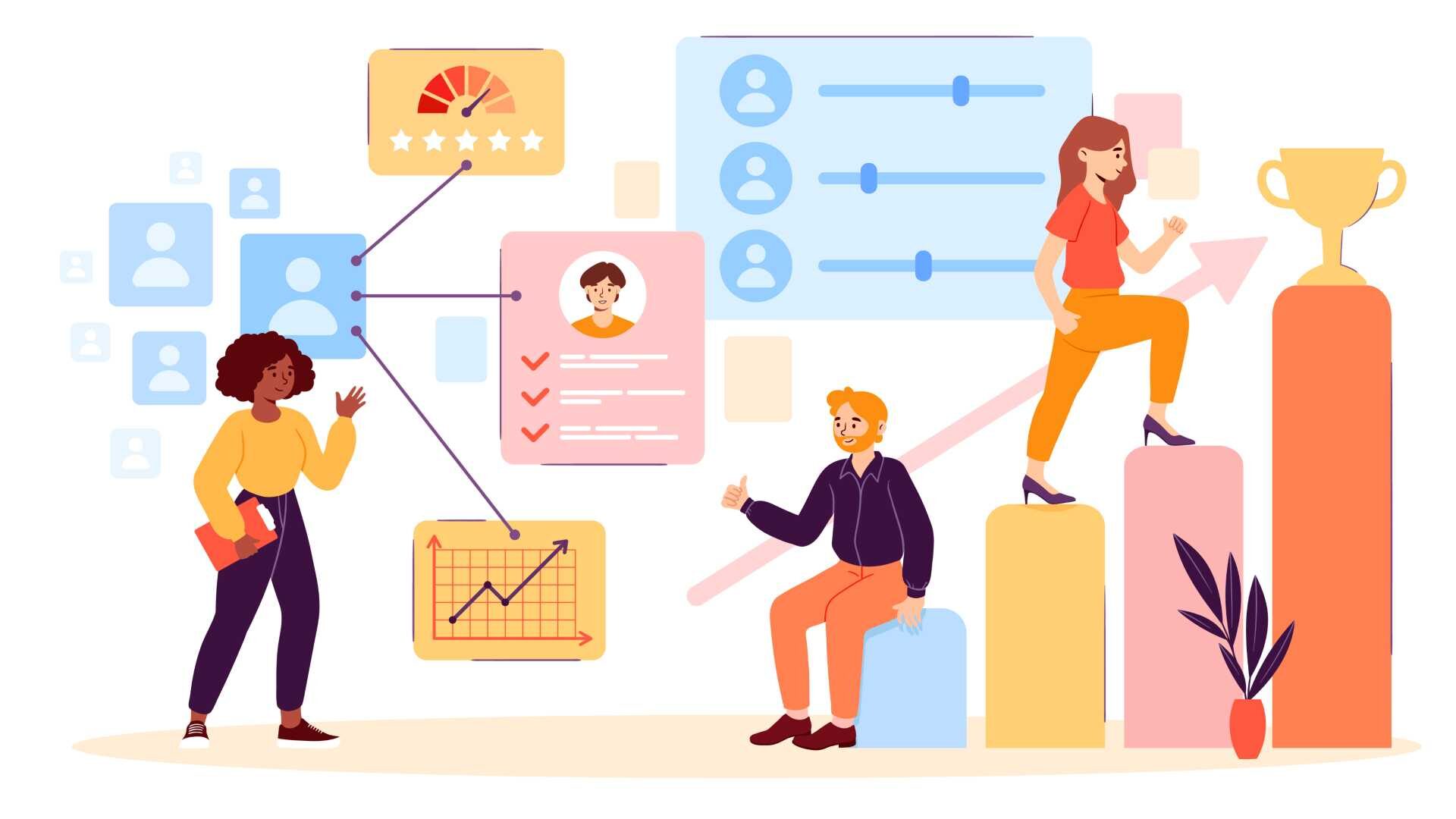We can all agree that there’s no magic, one-size-fits-all formula that ensures your training yields the desired results, so why are so many organizations still playing by a 40-year-old rule book that suggests there is? The 70-20-10 model for learning and development (L&D) has long served as a roadmap for L&D professionals as they develop their training programs. While the research behind this model was intended to inform best practices for developing management, it has become the supposed “perfect formula” for all of L&D.
The 70-20-10 model was developed in the 1980s based on a survey of executives and managers from just six corporations. Respondents were asked to highlight three key learning opportunities from their careers as managers. Their responses led researchers to establish an ideal on-the-job (70%), social (20%) and formal (10%) mixture of learning sources.
Training Industry decided it was time for an update to this “OSF” (on-the-job, social, formal) ratio, as we coined it. In 2017 and again in 2022, Training Industry surveyed a total of 1,390 working professionals across hundreds of organizations, asking them where they tended to learn new things about their jobs. Despite the disruption brought on by COVID-19 between these studies, the results were very similar. Averaging the responses from the two samples, we determined the modern learner’s OSF ratio is closer to 55-25-20 (an approximation, as this ratio varies from company to company).
This is hardly surprising given the developments in technology since 1987. Where formal training used to require tangible materials, a live instructor and learners all in one room, it can now be administered directly to the employee as needed, regardless of their location, thanks to virtual learning options. With the ability to access training resources and reach our colleagues any time via cell phones, tablets and computers, there should be a greater balance in this ratio.
So, how can you choose the training modalities that are best for your learners in light of all this contradictory information and the seemingly endless possibilities available? Training Industry’s head of research, Dr. Tom Whelan, emphasizes, “There’s no objectively correct answer. The OSF ratio is a framework for understanding the sources of learning rather than a rubric for determining the sources of learning that an organization must abide by. There isn’t anything magical about those numbers.”
The truth is, Training Industry data shows the OSF ratio is influenced by a variety of factors, and the “right” ratio varies depending on the organization. It’s more important to look at your current training offerings and evaluate whether they’re meeting your company’s needs now and will continue to meet those needs in the future. Whether you’re starting a new training program or looking to refresh what you already have, there are three main factors that can help determine which modalities are the right fit.
3 Factors to Consider When Choosing Training Modalities
1. The objective of the training.
The first step in choosing a training modality is to identify the learning objective. What are your goals and expectations? Paul Meskanick, vice president of learning solutions at Ingenuiti, emphasized the importance of this first step: “A good place to get started is to ensure alignment with the stakeholders and leaders to determine what business problem you’re trying to solve. If you work backwards from there, then the modality you’re going to prescribe becomes apparent.”
The learning objective should be specific, measurable and tied to a business goal. Once the learning objective is defined, you can select a training modality that will best achieve that goal. For knowledge-based objectives, your learners will need more formal, technical training delivered from an instructor (whether virtually or in person). For more skill-based objectives, the learner would benefit from participating in on-the-job and social training through job shadowing, role playing, simulations and other hands-on methods. If the objective is to provide learners additional support in their roles, they would need more social sources like coaching and mentoring, with on-demand resources available on the job.
Sweetwater’s vice president of employee well-being, Dr. Kristal Walker, CPTM, SHRM-CP, adds that you also need to consider that training may not even be the answer. “It’s important to ask the right types of questions: Is there a better solution? Could the solution we’re trying to find be solved with coaching or counseling as opposed to training?” Whichever route you take, you must start with the business goal you’re trying to reach.
Training manager for Lift Off Distribution, Dan Stotler, CPTM, adds, “Whether it’s on-the-job training, classroom training or peer training, the biggest thing is the impact on the business.” Choose the modality that is the best fit for your end goal to ensure success.
2. The needs of the learner.
Understanding your audience and their needs is essential to choosing the best modality for your training. The best method for content delivery depends on the nature of their job, their schedule and their learning preferences.
For example, Dan Stotler oversees training at a beverage distribution company. His employees are on the road, making deliveries to customers starting at 5 a.m. It’s hard to fit training in that doesn’t inconvenience the employee or disrupt the entire flow of the business. “On-the-job training really pays off there — video libraries, being out with their manager on the street,” he says.
Front-line employees are going to benefit more from flexible on-the-job or social learning experiences such as job aids, microlearning, infographics, podcasts and ride-alongs or job shadowing. However, a professional who works predominately at a desk, whether remote or in the office, will have more opportunities for formal training sources such as eLearning modules and classroom instruction.
Dr. Whelan adds that a big consideration is where the learner is within the employee lifecycle. “If they’re new to the job, how much on-the-job learning are they tangibly able to do if they don’t have some of the job-specific skills and vocabulary yet? Early on you have to concentrate on more formal sources of learning.”
As employees become more experienced in their roles, Dr. Whelan says, “Their expertise is built through the constant retesting of their knowledge and skills, having it questioned and articulating the nuances of the what, why and how to newer employees. It’s mutually beneficial for someone who’s more tenured to have more social learning in their portfolio because they can offer institutional knowledge newer employees won’t get from formal sources.”
The preferred modality also depends on what they have access to during their workday. Is eLearning even feasible if they don’t have immediate access to a computer? Do they have a mobile device that is compatible with the resources you want to share? Which training will be the least disruptive to their day? Choose the balance of sources that makes the most sense for your learners.
3. The resources at your disposal.
Before you can determine the best modality for your training, you must consider its feasibility based on your resources: budget, time, technology and infrastructure. While artificial intelligence (AI), virtual reality (VR) and other tech tools are exciting, they may not be the best use of your training budget.
Avoid what Meskanick calls a “modality bias”: “Sometimes there’s this ‘soup du jour’ of modality because it’s what everybody’s talking about. Unfortunately, this thinking leads to a solution in search of a problem. You should ask ‘What’s the best tool to solve for my problem?’ And it’s not always going to be any specific modality.” Decide which tools will be most effective based on your learning objectives and resources, not current trends.
Time must be factored in as well. Is the learning objective time-sensitive? Do the learners have the time to complete a formal training session? Does the learner need information in the flow of work? Creating training that will meet the needs of learners at the right time is necessary for training professionals to consider when selecting how the learning will be delivered.
Your organization’s infrastructure is another key consideration. Is there enough staff to administer the in-person training you’ve chosen? Do you have enough space to facilitate the training? Will the learners have access to the tech and tools they need to complete the training? You may have to factor in partnering with a vendor to achieve some training goals, which will, in turn, affect your budget.
Your training choices must be realistic in terms of your available resources. Choose modalities that will ensure your training is feasible, effective and efficient.
Final Thoughts
Today’s learners have more means of obtaining information than generations past. Advancements in technology have created limitless options for delivering training, creating a challenge for many learning leaders to select the right training tool.
Ultimately, what success looks like for one organization will be different for another, which is why a perfect OSF training ratio doesn’t exist.
“The 70-20-10 model has really challenged us to think about what’s going to be most effective for the audience,” Dr. Walker says. “How can I design the training that is most effectively designed to meet the needs of my learners?”
The modality that is the best fit for your organization will take into consideration the needs of your learners and the desired outcomes for your business. If you focus on your objectives, your learners and your resources, you’ll land on the best ratio for your training needs.
Learn more about our research report, “Updating 70-20-10 for the 21st Century,” here.










